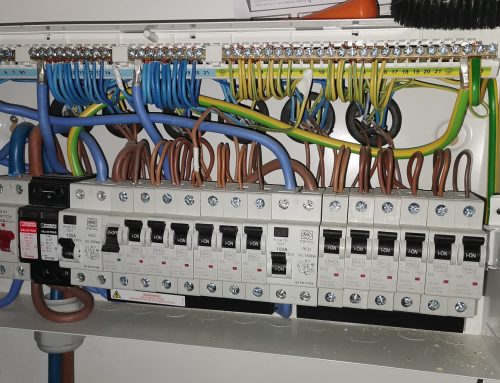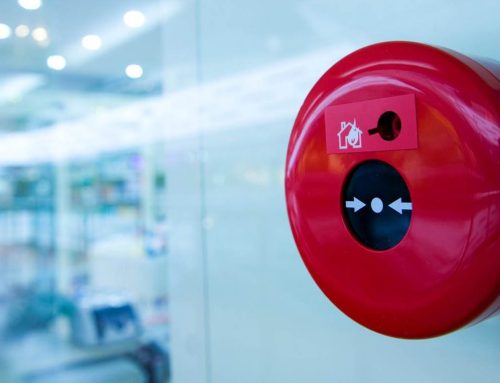What is PAT testing and why is it important for home owners?
PAT testing, or Portable Appliance Testing, is the process of testing electrical appliances to ensure that they are safe to use. This is done to prevent electrical hazards, such as fires or electrocution, and to ensure that the appliances are in good working order.
PAT testing is especially important for homeowners because it can help to protect their families and their homes from electrical hazards. For example, if you have a frayed or damaged power cord, this can pose a serious fire risk, as the wires can come into contact with each other and start an electrical fire. Similarly, if you have a fault in an appliance, this can also lead to a fire, or even cause someone to receive an electric shock.
PAT testing is a crucial step for homeowners to take in order to keep their homes and families safe. By ensuring that all of their electrical appliances are in good working order, they can reduce the risk of fires, electrocution, and other electrical hazards. So, if you haven’t had your appliances tested yet, we would highly recommend that you do so as soon as possible.
How often should home owners conduct PAT testing in their properties?
The frequency of PAT testing for homeowners depends on several factors, including the type of appliance, its usage, and its age. As a general rule, it’s a good idea to have your appliances tested at least once a year, especially if they are used frequently or are getting older.
For appliances that are used frequently, such as microwaves, kettles, or toasters, it’s a good idea to have them tested more often, as they are more likely to develop faults over time. On the other hand, appliances that are used less frequently, such as vacuum cleaners or power tools, can be tested less frequently, perhaps every two to three years.
In addition to the frequency of usage and age of the appliance, the environment in which it is used can also affect the frequency of PAT testing. For example, if you live in a damp or humid area, it’s a good idea to have your appliances tested more frequently, as moisture can cause damage to the electrical components and increase the risk of electrical hazards.
Who is responsible for PAT testing in a rental property – the landlord or tenant?
The responsibility for PAT testing in a rental property depends on the terms of the lease agreement between the landlord and tenant. In many cases, the landlord is responsible for ensuring that all electrical appliances in the rental property are safe to use and are in good working order. This typically involves having the appliances tested regularly by a qualified electrician.
However, it is important to check the terms of the lease agreement to determine who is responsible for PAT testing, as the agreement may specify that the tenant is responsible for having the appliances tested. In these cases, the tenant may be required to have the appliances tested at their own expense, or the cost may be split between the landlord and tenant.
In general, it’s a good idea for both the landlord and tenant to be aware of the PAT testing requirements and to make sure that all appliances are tested regularly. This helps to ensure that the rental property is safe and that there is no risk of electrical hazards, such as fires or electrocutions.
What are the consequences of not conducting PAT testing in a home?
Not conducting PAT testing in a home can have serious consequences, as it increases the risk of electrical hazards, such as fires or electrocutions. If appliances are not tested regularly, there is a greater chance that they will develop faults, which can lead to serious accidents and even death.
In addition to the risk of electrical hazards, failing to conduct PAT testing can also result in legal consequences. If a tenant or visitor is injured as a result of a faulty appliance, the homeowner could be held liable and could face a lawsuit. Similarly, if a fire is caused by a faulty appliance, the homeowner could be held responsible for any damages caused.
Another consequence of not conducting PAT testing is that it can impact the value of a home. If a potential buyer becomes aware that the appliances have not been tested, they may be hesitant to purchase the property, as it increases the risk of electrical hazards.
What kind of appliances should be included in PAT testing for a home?
PAT testing, or Portable Appliance Testing, should include any electrical appliance that is used within the home and is portable or can be moved from one location to another. This includes, but is not limited to, the following types of appliances:
- Kitchen appliances, such as microwaves, kettles, toasters, and coffee makers.
- Audio and visual equipment, such as televisions, DVD players, and sound systems.
- Personal care appliances, such as hair dryers, straighteners, and shavers.
- Computing equipment, such as laptops, desktops, and printers.
- Power tools, such as drills, saws, and sanders.
- Vacuum cleaners and floor care appliances.
- Heating appliances, such as electric heaters and fireplaces.
It’s important to include all appliances that are used within the home, as they may pose a risk of electrical hazards if they are not in good working order. During the PAT testing process, a qualified electrician will examine each appliance to make sure that it is safe to use and that there are no faults or damage that could lead to an electrical hazard.
How much does PAT testing typically cost for a home?
The cost of PAT testing for a home can vary greatly depending on several factors, including the number of appliances to be tested, the location of the home, and the qualifications and experience of the electrician conducting the test.
Typically, PAT testing for a small home with a limited number of appliances can cost anywhere from £50 to £100. For larger homes with more appliances, the cost can increase to several hundred pounds.
Click Here To Get More Information and Prices For Our PAT Testing Service
What is the process of PAT testing in a home and how long does it take?
The process of PAT testing in a home typically involves the following steps:
Preparation: The electrician will identify the appliances that need to be tested and will gather all necessary equipment and tools.
Visual inspection: The electrician will conduct a visual inspection of each appliance to look for any obvious faults, such as frayed cords or damaged plugs.
Testing: The electrician will then use specialized equipment to perform electrical safety tests on each appliance, including earth continuity testing, insulation resistance testing, and functional testing.
Labeling: Once the tests have been completed, the electrician will label each appliance with a date sticker to indicate when the test was conducted and whether the appliance passed or failed.
Reporting: Finally, the electrician will provide a report of the results of the PAT testing, including a list of any appliances that failed the test and any recommendations for repair or replacement.
The length of time it takes to complete PAT testing for a home can vary depending on the number of appliances to be tested, but it typically takes several hours for a small home with a limited number of appliances.
What should home owners look for when choosing a PAT testing company?
When choosing a PAT testing company for your home, it’s important to consider several factors to ensure that you find a reputable and reliable company that will provide high-quality services. Here are some of the key things you should look for when choosing a PAT testing company:
Qualifications and experience: Make sure that the company and its electricians are fully qualified and have the necessary experience to perform PAT testing. You can check their credentials and ask for references from previous clients to verify their qualifications and experience.
Reputation: Look for a company with a strong reputation for providing high-quality PAT testing services. You can read online reviews and ask for recommendations from friends and family members to get a sense of the company’s reputation.
Pricing: Get quotes from multiple PAT testing companies and compare the prices to ensure that you are getting a fair deal. Keep in mind that the cheapest option may not always be the best, as it’s important to choose a company that offers a good balance of quality and affordability.
Equipment and techniques: Make sure that the company uses the latest equipment and techniques for PAT testing to ensure that your appliances are thoroughly tested and that the results are accurate.
Reporting and labeling: Ensure that the company provides a detailed report of the results of the PAT testing, including any recommendations for repair or replacement, and that they label each appliance with a date sticker to indicate when the test was conducted and whether the appliance passed or failed.
EFE Fire & Electrical Ltd. offers NICEIC and insurance approved certificates. Click Here To Get More Information and Prices For Our PAT Testing Service
Are there any regulations or laws that require PAT testing for homes in London?
In the UK, there are no specific regulations or laws that require PAT testing for homes. However, it is important to note that there are regulations and laws that require landlords to ensure that their rental properties are safe and free from hazards, and PAT testing is one way to help meet these requirements.
The Electrical Equipment (Safety) Regulations 1994 require that electrical equipment is safe to use, and the Health and Safety at Work Act 1974 places a duty on landlords to ensure, so far as is reasonably practicable, the health and safety of their tenants. This includes ensuring that electrical appliances and equipment in the rental property are safe to use.
While PAT testing is not a legal requirement for homes in London or the rest of the UK, it is strongly recommended by many experts as a best practice to ensure the safety of electrical appliances in the home. PAT testing can help identify any electrical safety issues and can help prevent accidents and fires, making it a valuable investment for home owners.
Can home owners conduct PAT testing themselves or is it necessary to hire a professional?
In general, it is not recommended for home owners to conduct PAT testing themselves as it requires specialized knowledge, training, and equipment. PAT testing is a complex process that involves checking a variety of electrical safety features and assessing the overall safety of an appliance. This requires a trained and experienced professional who can accurately identify and assess any potential safety hazards.
While it may be tempting to save money by conducting PAT testing yourself, it is important to keep in mind that this can be dangerous and may not provide accurate results. A professional PAT testing company will have the necessary training, equipment, and expertise to perform the testing safely and accurately, and will be able to identify any potential hazards that may not be obvious to a layperson.
If you are a landlord, it is also important to keep in mind that a professional PAT testing company will provide you with a detailed report of the results of the testing, which can be used to demonstrate compliance with health and safety regulations. This can be particularly important in the event of an accident or injury, as it can help you to defend yourself against any legal claims.






